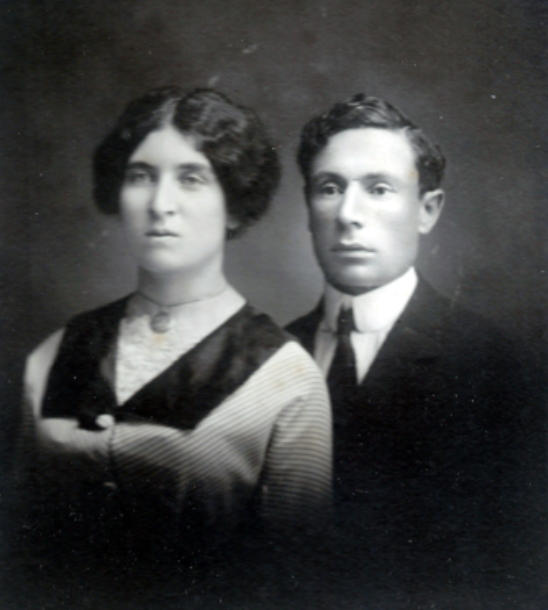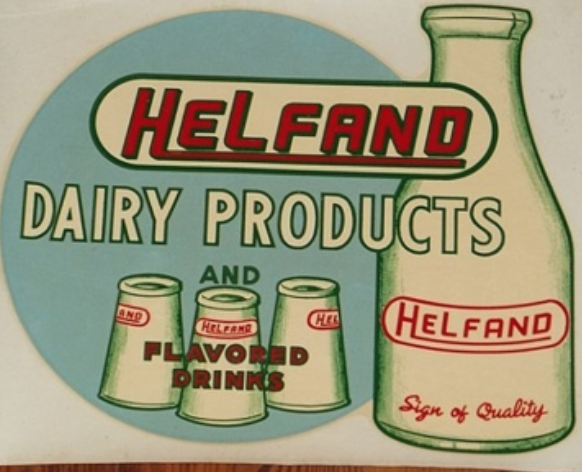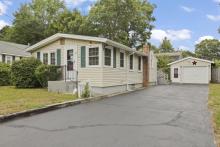Dartmouth Historical Society discussion doubles as class reunion
The Dartmouth Historical and Arts Society hosted a lecture on the Helfand family on July 24, and although Helfand family members Edith and Sophie Hefland made an appearance, the more than 50-person gathering looked more like a class reunion.
DHAS President Bob Harding invited Edith and Sophie Helfand (Dartmouth High class of 1940 and 1941) to the Sunday night meeting, along with Dartmouth High grads Aurore Lafond Chace and Ruben Goldstein to talk about not only the Helfand Farm (still located at 318 Chase Road), but also to explain life in Dartmouth over 75 years ago.
“This is important because it represents families, families of all kinds, families that work hard and succeed,” said Harding at the meeting.
Harding started the 90-minute presentation with a brief introduction to the Helfand family, saying Gussie and Annie Rosofsky and Harry and William Helfand emigrated from Belarus—then part of imperial Russia—between 1895 and 1905. The sisters married the brothers, and between the two couples produced 20 children. The families bought the Chase Road property in June 1912 to accommodate the family size.
Growing up in the two-story house sometimes meant three to a bed, said Sophie Helfand. William Helfand built another house on the property for his family sometime before 1920.
Sophie also said that the girls worked primarily in the house—she despised doing dishes—while the boys worked in the fields.
“We had one of the first tractors in town,” said Goldstein, who graduated from Dartmouth High in 1940. He said he would trade tractor work for manual labor from the Helfands.
Goldstein said the Helfands were great at making sure there were no stones in their fields. When he finally asked the family where all the stones went, they responded that they sold them to the crusher for 25-cents per ton. The crushed stone went towards building roads in Dartmouth.
The Helfand and Goldstein families survived the Great Depression. “Everyone was in the same boat and we didn’t know we were poor,” said the Helfand sisters, saying $16 each week fed eight children.
Goldstein said that, during that time, some families didn’t have enough clothing for every kid to go to school everyday, so students would rotate as they shared clothing.
Chace—Dartmouth High, class of 1939—said that the two-room schoolhouse in Hixville housed grades 1-3 in one room, and 4-7 in another. Eighth graders went to the Gidley School.
“You’d hurry up and get your work done so you could listen to the other kids recite,” she said.
Ninety-eight-year-old attendee Horece Wildes—Dartmouth High, class of 1935—stood up to contribute to the conversation.
The first bus routes were all individually contracted, said Wildes. He recalled Charlie Chase of Smith Mills, who had a contract for the north Dartmouth route, had built his first school bus from a Pierce-Arrow chassis and mounted a wooden body onto it.
Two world wars later—eight of the Helfand children served in the military—Samuel Helfand gained possession of the property. As the last surviving child of Annie and William—although Harry and Gussie also had a son by the same name—he passed the deed to the Dartmouth Natural Resources Trust in 2013.
Edith and Sophie are two of Harry and Gussie’s 13 children. They currently live together on Slocum Road, across from Bishop Stang High School.
The next DHAS meeting will be on August 28 at 6:30 p.m., and will cover Perry's Grove Clambake. DHAS meets at the 1871 Schoolhouse, located at 1205 Russells Mills Road.






















